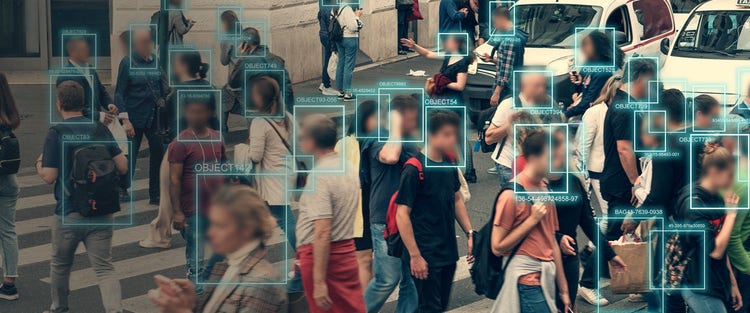<p><span class="medium"><br> July 29, 2025</span></p>
The rise of AI-native data engineering
<p><b>Data engineers are to modern AI models what coders are to software. Their future will be shaped by harnessing the power of this transformative technology.</b></p>
<p>Data engineers have long been the unsung heroes of modern business. Many of the most dazzling achievements of the digital age have relied on the work of people toiling behind the scenes to build and maintain the data pipelines, databases and infrastructures that store and analyze the ever-rising tides of information that define today’s competitive landscape.</p> <p>But today is becoming tomorrow, and life is changing fast for the humble data engineer. <a href="https://www.cognizant.com/us/en/insights/perspectives/chatgpt-and-the-generative-ai-revolution-wf1532750" target="_blank" rel="noopener noreferrer">With advancements in AI</a>, data engineering has already transformed the day-to-day work of wrangling data. With its ability to automate many tedious but manual processes, AI everywhere frees engineers’ time and attention for higher value tasks.</p> <p>In 2025, agentic AI—autonomous systems capable of executing tasks independently—has emerged as a transformative force in the field of data engineering. These agents collaborate across workflows, enabling data engineers to orchestrate complex pipelines with minimal human intervention.</p> <p>Not only that, but the unique importance of data engineering to AI itself is about to give these unassuming specialists a new and central role in the business ecosystem—unsung no longer; heroes more than ever.</p> <h4>Upskilling for the AI-native data landscape</h4> <p>In current context, the new breed of AI models can generate original content based on the patterns and structures learned from huge troves of existing data.</p> <p>Such models level-up the visual medium, and the most obvious, immediate value of these technologies to data engineers is that it will let them produce high-quality outcomes from a data set without (necessarily) enlisting the help of human designers or even analysts. One of the most exciting developments in recent times is the meteoric rise of GenBI which empowers business users and analysts to interact with data using natural language queries, which are automatically translated into optimized SQL code. For data engineers, GenBI is a game-changer. It reduces the backlog of ad hoc requests, allowing them to focus on strategic tasks like data architecture, governance, and performance tuning. It also opens up new responsibilities—such as training GenBI models on custom schemas and validating query outputs for accuracy and fairness.</p> <p>The core purpose of data engineering has always been to lay bare the trends and meanings within a data set. GenBI and AI in data engineering has the potential not only to help identify those trends and meanings, but to also present them with such clarity that non-technical minds can grasp them in an instant.</p> <p>But the “creativity” of data engineering has always been unmatched. The work requiring the most inspiration, abstraction and “what-if” thinking is the design of data infrastructures themselves.</p> <p>As models become more advanced, they will be able to tackle these more complex data engineering tasks, from schema generation to feature engineering. Already, though, simply by automating much of the technical drudgery of data work—coding, for instance, or system maintenance, the rise of AI is freeing up data engineering professionals to spend more of their time and creativity on high value work and more abstract thinking.</p> <p><b>The data backbone of next-gen AI </b>The potential to help data engineers better manage the flow of existing data, this technology can also create new data. The appeal of this may not be obvious to a business already drowning in information—struggling with the challenge of converting an unmanageable “data swamp” into a less daunting “data lake,” say. However, there are several key areas where new data can directly drive growth and aid decision-making.</p> <ul> <li><b>Data enrichment.</b> A pet peeve of every data engineer is the incomplete dataset, and advanced AI models employ advanced machine learning techniques, such as Generative Adversarial Networks (GANs) and Variational Autoencoders (VAEs) to generate realistic, high-quality data samples. This capability is becoming an essential part of AI in data engineering workflows.<br> <br> By training multiple neural networks to work in tandem, the generated output can be refined until it’s functionally indistinguishable from the missing data. By itself, this innovation—which eliminates the need for manual data imputation—can greatly streamline the data engineering process and reduce the time spent on data cleaning and preprocessing.<br> <br> </li> <li><b>Privacy-by-design for AI workloads. </b>In the age of stringent data privacy regulations, such as GDPR and CCPA, it’s essential for businesses to ensure the privacy of sensitive user information. Generative AI models can be used to create synthetic data that retains the statistical properties of the original data while removing any personally identifiable information. This synthetic data can then be used for data analysis and other purposes without violating privacy regulations. Needless to say, synthetic data generation has scaled massively in recent times, with over 60% of training data for gen AI models in 2025 now being synthetic. This has reduced reliance on sensitive or proprietary datasets and accelerated model development cycles.<br> <br> </li> <li><b>Outcome-driven AI forecasting.</b> If insights drawn from past and current business data are invaluable to decision-makers, imagine what they could do with information from the future? AI is analyzing historical and current data and patterns to help make exectives take informed decision by realizing customer behavior, market dynamics, operational performance and other key business factors. Furthermore, Real-time data pipelines have become standard now, allowing generative models to ingest and respond to live data streams. This shift has enabled dynamic decision-making and adaptive model behavior in production environments.</li> </ul> <h4>AI in data engineering cautionary tales</h4> <p>Concerns regarding the potential risks of advanced AI models are widely documented, and being a product of data engineering itself, any and all of AI’s problems are ultimately problems for the data engineer. However, when considering the use of AI <i>within</i> data engineering, some of these hotly debated risks are likely less of an issue than they are for other fields, while others may be more worrisome.</p> <p>More disturbing was the reality that bias and prejudice within the training set, and the unconscious bias of those developing the model, could help perpetuate or even amplify those injustices in the real world, and thus in future data sets.</p> <p>Data engineers need to be mindful of these issues; a set of raw numerical data can be as tainted with bias as any collection of words. For the most part, though, in the abstracted world of big-data infrastructure, it is more difficult to give offense, and numbers will never equal words or pictures in their capacity to wound or shock or denigrate.</p> <p>The questions around model transparency, however, may pose more of a challenge to data engineers. Advanced AI models, particularly those based on deep learning techniques, can often be functional “black boxes.” They can take input in the form of a natural-language prompt and, from it, produce content that is also digestible by human minds. In many cases, though, the chain of “reasoning” between those inputs and outputs is utterly opaque, conducted in terms that only the model understands.</p> <p>Developing techniques to improve the interpretability and explainability of next-gen AI models will be crucial to their widespread adoption and integration into data engineering workflows.</p> <p>In 2025, explainability tools have matured a lot, offering interpretable insights into model behavior. These tools help data engineers validate outputs and ensure compliance with ethical standards and regulatory frameworks.</p> <h4>A unique relationship</h4> <p>All of which is only to say that leveraging AI in data engineering is going to have the same kind of impact on data engineers as it’s going to have on so many of us: a profound one, changing not just how we work, but what our work even is.</p> <p>What makes data engineering uniquely pivotal is that it forms the foundation of modern AI systems, it's where these models originate and what enables their intelligence. All the dazzling power of large language models, and their equivalents, comes from the awesome size of the datasets they use to train, and the systems that sift, analyze and weight that data into the billions—even trillions—of parameters that a model applies in order to produce fresh content.</p> <p>Today, new tooling ecosystems have emerged, integrating gen AI capabilities directly into data engineering platforms, redefining the way in which data engineers used to work. These include agent orchestration frameworks, synthetic data generators, and real-time monitoring dashboards.</p> <p>The next few years, in short, are going to be a wild ride for specialists who today, in the public imagination, are still primarily tasked with turning last year’s Q4 sales data into a pie chart. As professionals in every field adjust to life as the flesh-and-blood member of a human-machine partnership, it is data engineers, increasingly, who will be the matchmakers, chaperones and couples-counsellors of those relationships.</p> <p>It’s no exaggeration to say that humanity’s immediate future will be shaped directly by data engineers. And the future of data engineering, conversely, will be shaped by those who are best prepared and most willing to harness the awesome power of this transformative technology.</p>
<p>Naveen Sharma is SVP of Cognizant’s AI & Analytics business. He blends strategic vision with tactical execution and is focused on driving growth via thought leadership, innovation, pre-sales, offering development and portfolio management.</p>

